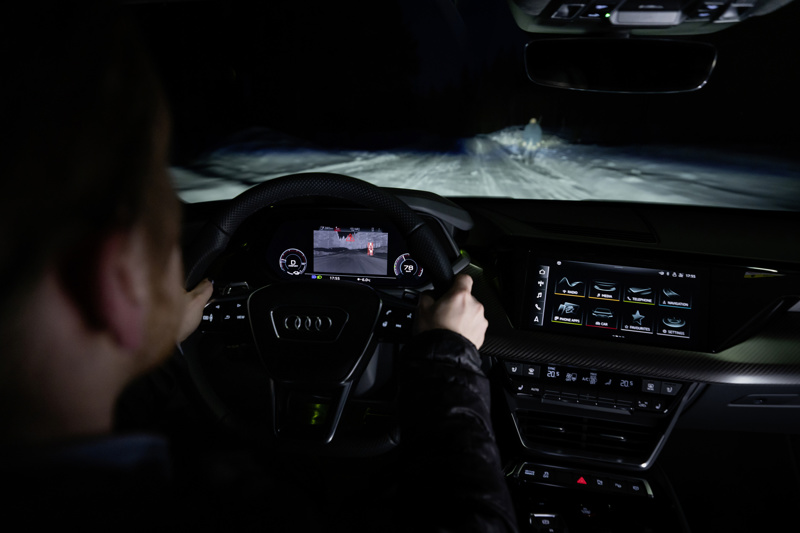Infrared Camera
Infrared cameras, also known as thermal cameras, are used in some cars for various purposes such as night vision, pedestrian detection, and animal detection.
Infrared cameras detect the heat signature of objects, unlike traditional cameras that rely on visible light.
Audi e-tron GT with infrared night vision camera
How Infrared Cameras Work
Infrared cameras typically use long-wave infrared (LWIR) or mid-wave infrared (MWIR) radiation to detect heat signatures. LWIR cameras are more commonly used in cars as they are better suited for detecting heat emitted by people and animals, while MWIR cameras are better suited for detecting heat emitted by vehicles.
Applications in Cars
In cars, infrared cameras are usually mounted on the front of the vehicle and are used to detect obstacles on the road, such as pedestrians or animals. They also provide enhanced visibility in low light or night-time driving conditions.
Advantages
- Night Vision: Infrared cameras can detect objects in complete darkness or low light conditions.
- Long-Range Detection: They can detect objects at a greater distance than traditional headlights or high beams, making them useful for spotting obstacles on the road ahead.
Limitations
- Heat Emission Dependency: Infrared cameras can struggle to accurately detect objects that are not emitting a significant amount of heat, such as parked vehicles or stationary objects.
- Weather Sensitivity: They can be affected by weather conditions such as heavy rain, fog, or snow, which can interfere with the heat signatures emitted by objects.
Conclusion
Infrared cameras are an important safety feature in cars that help drivers detect obstacles on the road in low light or night-time conditions. However, they should not be relied upon as the sole means of detecting obstacles. Drivers should always use caution and other safety features to ensure safe driving.

